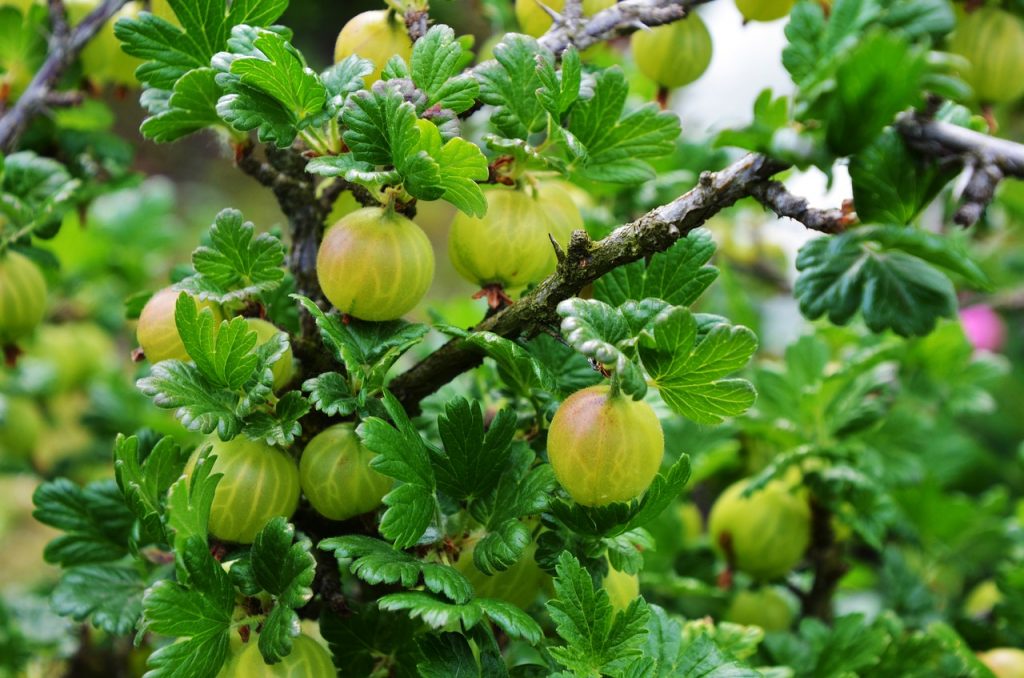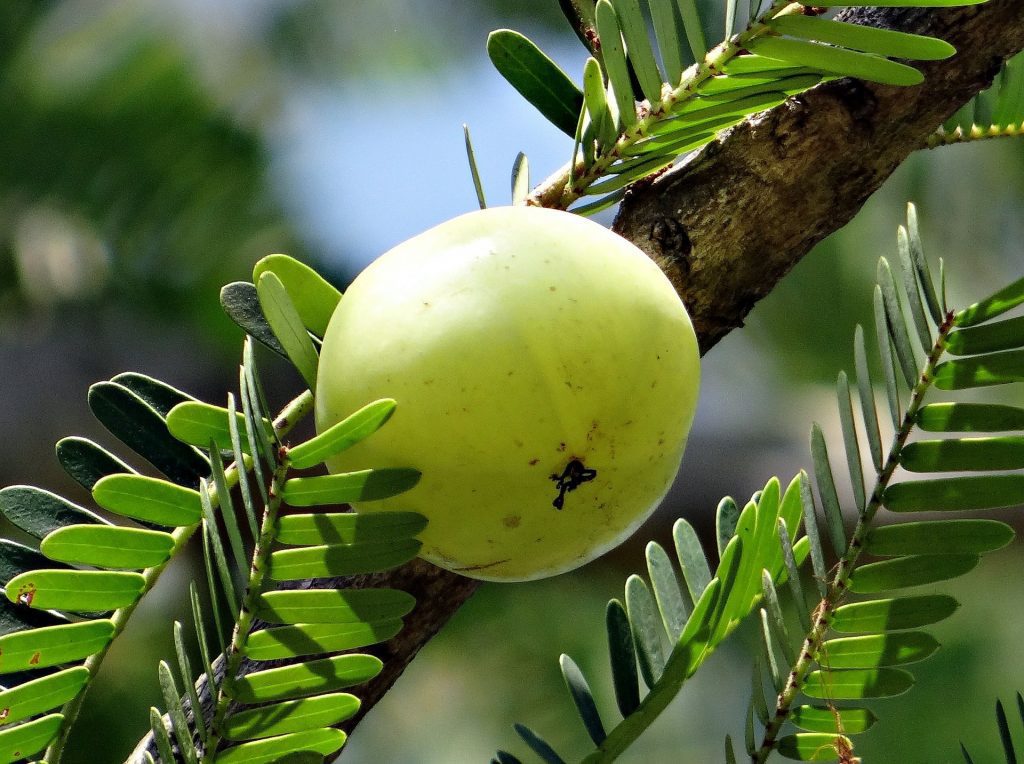Our mothers and grandmothers have pestered us for years to start eating amla for hair, clear skin, and sharp eyesight. Isn’t that right? Well, it’s time you start listening to them because amla is a treasure trove of health benefits. Amla (आंवला) or Indian gooseberry has been an integral part of Ayurvedic and naturopathic diets for centuries. Classified as traditional medicine, amla is linked with the betterment of overall health and wellness.
Weight loss, blood sugar control, improved vision, and promoting cardiovascular health, are just some of the health benefits of amla that echo the important role it plays in one’s health and lifestyle. Amla is also credited with solving a lot of hair-related issues like hair fall and thinning. Having more than 80% of water, amla is loaded with nutrients, minerals, vitamin C, proteins, and fiber. Let’s take a look at the benefits of amla for hair and also the benefits of amla for other health-related issues that can be solved with an adequate intake of amla or amla juice in your diet.
Table of Contents
Health Benefits Of Amla (Indian Gooseberry)

1. Improves Digestion
High on fiber, this beneficial fruit helps in adding bulk to the stool, further aiding in the movement of undigested food through the bowel. By stimulating the secretion of gastric and digestive juices, amla helps in efficient digestion in which adequate amounts of nutrients can be absorbed by the body.
2. Amla Juice Strengthens Immunity
Loaded with vitamin C and A, polyphenols, flavonoids, and some other key antioxidants, amla acts as a powerful immunity booster. Acting as a potent anti-bacterial element, consumption of amla (Indian Gooseberry) can lead to an increase in the concentration of white blood cells, which are an important part of the immune system, as they are responsible for the elimination of toxins from the blood.
3. Weight Management
One of the chief reasons why amla is so good for weight loss is the fact that it has a high concentration of fiber. Fibers, unlike any other nutrients, are quite hard to digest. So, when a fiber-filled food is consumed, the body requires an extra amount of work for its digestion; thus the body spends more calories digesting food than it takes in, in the first place. Hence, Indian gooseberry or amla consumption can lead to a healthy metabolism with more fat-burning capabilities, leading to healthy weight loss.
4. Boosts Liver Health
A high concentration of phytochemicals such as gallic acids and ellagic acid gives amla its antioxidant qualities. Hence it tends to act as a free-radical scavenger (1). According to Ayurveda, this antioxidant property of Indian gooseberry makes it beneficial for the liver’s health, as it protects our body tissues from getting damaged by the free-radicals (free-oxygen atoms) in the blood.
5. Reduces The Risk Of Heart Disease
Consumption of amla (Indian gooseberry) has proven to be responsible for strengthening the heart muscles, further resulting in good cardiovascular health and proper pumping of the blood (2). Furthermore, the rich iron content of amla can be beneficial for increasing hemoglobin production, an oxygen-carrying cell in the blood. This makes sure that an adequate amount of oxygen is transported to each of the organs. Studies have shown that regular intake of amla can help in lowering LDL levels or bad cholesterol.
6. Maintains Blood Sugar Level
. This fiber-filled fruit, as we all know, is quite beneficial for boosting metabolism and burning fat. However, if there is one advantageous and helpful benefit of amla consumption that makes it a true all-rounder item, it is its ability to stimulate the secretion of insulin (a hormone that is used in order to break down sugar molecules), thus reducing the level of sugar in the bloodstream. Moreover, the sugar that is broken down is later used by the body in the form of energy, hence making you more active. If you have diabetes, make sure you consult a doctor before including amla in your diet, as it can lower blood sugar levels. Ask your doctor to adjust your medicine dose accordingly.
7. Anti-ageing Properties
As mentioned before, Indian gooseberry (or amla) has antioxidant properties, thanks to the presence of important vitamins (both C and A). An antioxidant-rich diet plays a vital role in lowering the concentration of free-radicals (free oxygen atoms) in the blood. Combined with healthy cells, these free-radicals exert oxidative stress in the cell walls that causes healthy cells to get damaged. Most of the free-radical damages occur as the body starts to age. However, by lowering the level of free-radicals, eating amla can reduce the risk of free-radical damage, further delaying the onset of age-related defects.

8. Improves Eye Health
The carotene content, which is abundantly present in amla, is known to have powerful effects on eye-related issues. Moreover, the presence of vitamin A is enough to mark amla as a beneficial product for eye health, as it tends to cure near-sightedness, cataract, and other age-related vision defects. Macular degeneration is one of those age-related defects that the antioxidant nature of amla keeps at bay.
9. Benefits Of Amla For Hair
Applying amla oil over the scalp is quite a popular remedy for curing hair loss and delaying the onset of grey hair. An external application and a thorough massage of amla oil can form a thin layer over the scalp, which helps prevent moisture loss, thus aiding in getting rid of dry and itchy skin. Moreover, the vitamins in amla tend to keep the hair follicles nourished.
Not only oil application, but consumption of amlas regularly can help treat hair problems like dandruff, thinning, dullness, and greying of hair. An itchy scalp can be treated with some amla oil. Weak hair follicles can also be strengthened with amla. Not only does amla help in reducing hair fall, it also promotes hair growth. So, say hello to shiny, thick hair.
What Are The Different Ways To Eat Amla? | 12 Ways To Use Amlas
Amla is a superfood that has been used in India for centuries. Amla can be used in the following ways to improve hair quality, skin texture, and overall health.
Raw Amla – Just wash, cut and eat. It has a sour-bitter taste that turns sweet as you chew on it. The sourness and bitterness can be a little overpowering at first, but once you acquire the taste, nothing else feels fresher to taste.
Amla Powder – Amla powder is commonly available in the market and can be sprinkled on top of your fruits, chaats and even yogurt.
Fresh Amla Juice – Amla juice is simple to make and can be prepared fresh every day. Do not strain the juice or throw away the pulp when you make it.
Packaged Amla Juice – Lots of brands market and sell packaged amla juice. We strongly recommend reading labels before buying.
Amla Murabba – Murabbas or fruit preserves have been consumed throughout India using different fruits and vegetables like carrots, petha and amla. Preserved amla in thick sugar syrup can be eaten as a dessert also.
Amla Candy – Dried amla dusted with sugar produces amla candy. Amla candy is a nice way to introduce this vitamin c packed fruit to children. Amla candies are available at local grocery shops and online too.
Amla ‘Nimbu Paani’ – Grate a raw amla, squeeze out all the juice in a glass. Add a tablespoon of sugar syrup and water. Basically, turn it into a shikanji without the lemon. Add kala namak or shikanji masala if you like it. This can be given to children as a summer cooler as it is very refreshing.
Amla In Curries – Yes! You can add amla in your curries, sambar and rasam also. This will increase the tanginess of the dish significantly.
Amla Ka Achaar – A bottle of pickle is always lurking around the dining table. As awful it might sound, amla achaars are tasty and easily available online and at local shops.
Ghee Roasted Amlas – Wash, dry, and slit the amlas. In a wok, add ghee and slow cook the amlas. Shut off the stove and add a pinch of pepper and salt. Enjoy these mildly flavored ghee-roasted amlas as a supplement with your meal.
Boiled Amlas – In a pressure cooker, add washed amlas. A pinch of asafoetida (heeng), salt and turmeric. Cook for 2-3 whistles. Use it as an accompaniment with your meal.
Amla oil (Application) – There is no one throughout our country who hasn’t gotten a ‘tel maalish‘ (head massage) with the good old amla oil. Amla oil has been used to improve the quality of hair or hair related issues like dandruff, itchy scalp, thinning and greying of hair.
Recipe for Amla Juice | How To Make Amla Juice
One of the most popular ways of Indian Gooseberry (amla) consumption is in the form of a juice. Though the steps involved in the preparation of this healthy beverage are quite simple, there are still some precautions that one should take before consuming amla juice.
These are the ingredients that you’ll need in order to prepare approximately 2 servings of amla juice.
- 2-3 amlas / Indian gooseberry
- 2 cups of water
- Sweetener (Optional)
- Make sure that you cut the amla into small pieces; this makes it easier to mix it in the blender.
- Add the chopped amla pieces to the blender, and then thoroughly blend it with two cups of water until the desired consistency is achieved.
- Do not drain out the pulp. Drink up!
- If you cannot drink it as it is, add a sweetener (preferably honey) to the mix in order to get rid of the sour taste.
In the end, we would like to say that your choice of Indian gooseberry for the preparation of the juice also plays a vital role, like the one that is juicier and contains fewer blemishes would prove to be much more nutritional than the rest. Make sure to soak it in salty water, as it will be much more efficient in removing the unwanted particles from the fruit’s surface.
FAQs About Amla (Indian Gooseberry)
Disclaimer – This content including advice provides generic information only. It is in no way a substitute for qualified medical opinion. Always consult a specialist or your own doctor for more information before making any dietary changes.


